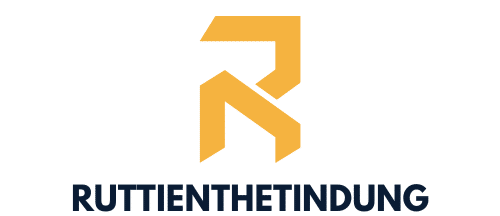Emerging technologies are revolutionizing various fields, and wildlife conservation is no exception. With the rapid evolution of artificial intelligence (AI) and machine learning, scientists, researchers, and conservationists have new, powerful tools to protect and preserve our planet’s precious wildlife species. AI can take data and transform it into actionable insights, like never before. It offers significant potential in wildlife conservation, from monitoring animal populations to predicting threats to their habitats. Let’s explore the ways AI can be a game-changer in the efforts to protect our planet’s wildlife.
The Role of AI in Monitoring Wildlife
Monitoring wildlife is one of the primary steps in understanding the needs of different species, their behaviors, and their population numbers. Traditional methods of monitoring wildlife often involve labor-intensive fieldwork, which can be time-consuming and limited in scope. Enter AI, and the scenario changes dramatically.
Topic to read : How to create impactful communication media with MyImageGPT ?
Artificial intelligence, specifically machine learning, is now being used to automate and enhance these monitoring efforts. With the use of AI-powered camera traps and drones, it’s now possible to collect vast amounts of data about animal movements, behaviors, and populations in real-time. These smart systems can identify and distinguish between different species, count individuals, and even recognize behaviors.
Machine learning algorithms are used to analyze the data captured by these devices, removing the need for manual tracking and data entry. This technology not only saves time but also increases the accuracy of the data collected.
Also to see : Can quantum computing revolutionize drug discovery?
Furthermore, AI can process and analyze this data much faster than human researchers could, providing near real-time monitoring of wildlife. This speed and efficiency can be crucial, especially in situations where immediate action is required, such as preventing poaching activities or responding to sudden changes in animal behavior.
Predicting and Mitigating Threats with AI
One of AI’s most significant potentials in wildlife conservation is its ability to predict threats, allowing for timely intervention. This application of AI can be particularly useful for endangered species, whose survival often hinges on proactive conservation efforts.
AI can be used to analyze vast amounts of data, including historical data, weather patterns, and human activity, to predict potential threats to wildlife. This could include predicting poaching activities based on past incidents and current data, enabling authorities to take preventative action.
In addition, AI can also help in mitigating the effects of climate change on wildlife. By analyzing patterns in climate data, AI can predict changes in habitats and their potential effects on the wildlife populations that live there. Conservationists can then use this information to implement strategies to protect these species and their habitats.
Moreover, AI and machine learning technologies can also help in predicting disease outbreaks in wildlife populations. They can analyze data on animal health, population dynamics, and environmental factors to predict potential disease hotspots.
AI in Habitat Conservation
Habitat conservation is crucial to preserve the diversity of wildlife. With the power of AI, conservationists can map and monitor habitats more effectively, leading to better conservation strategies.
Satellite and aerial imagery, combined with AI, allows conservationists to monitor changes in wildlife habitats over time. Machine learning algorithms can analyze these images and identify changes, such as deforestation, urban expansion, or other signs of habitat degradation or loss.
This technology can also identify areas that are important for wildlife, such as breeding grounds or migration corridors. Conservationists can use this information to prioritize their conservation efforts and protect these critical areas.
AI can also help in the restoration of degraded habitats. AI-driven models can analyze data on soil, vegetation, and other factors to determine the best strategies for habitat restoration.
AI and Human-Wildlife Interaction
Finally, AI has significant potential in managing human-wildlife interactions, which are becoming increasingly frequent and often detrimental to wildlife due to habitat loss and fragmentation.
Artificial intelligence can be used to develop and implement smart solutions to reduce human-wildlife conflicts. For example, AI can analyze data on animal movement patterns and human activity to predict potential conflict zones. This information can be used to develop strategies to prevent these conflicts, such as creating wildlife corridors or educating local communities.
AI can also be used to track and monitor the illegal wildlife trade, which is a major threat to many species. Machine learning algorithms can be used to analyze online marketplaces and social media platforms, identifying potential illegal activities and helping authorities to take action.
In conclusion, artificial intelligence holds significant potential in wildlife conservation. While challenges remain, such as ensuring the ethical use of these technologies and dealing with the vast amounts of data they produce, the benefits are undeniable. AI offers a powerful tool in the fight to protect our planet’s wildlife, and its use in this field is only likely to increase in the future.
AI and Species Identification
In the intricate world of wildlife, species identification is of paramount importance. For decades, this task has been conducted manually by experts, a method that’s both time-consuming and prone to human error. Artificial intelligence, combined with computer vision, has immense potential to revolutionize this process.
AI-powered systems can now analyze images or videos and accurately identify different species, including animals, birds, insects, and even plants. They can differentiate species based on their shape, size, color, and other unique physical characteristics. This is particularly advantageous in biodiversity-rich regions where manual identification can be highly challenging.
Machine learning algorithms can be trained on large datasets to recognize thousands of species. Over time, these algorithms can improve their accuracy and precision, thanks to their learning capabilities. For instance, AI has been used to identify individual whales by their unique markings, monitor bird populations based on their calls, and even distinguish between mosquito species based on their wingbeat frequency.
Species identification plays a crucial role in wildlife conservation. It helps in tracking the population and distribution of species, identifying endangered species, and monitoring biodiversity. By automating this process, AI not only speeds up the process but also enhances the accuracy of species identification. This can significantly improve conservation efforts, enabling timely and effective intervention to protect threatened species.
AI in Real-Time Remote Sensing
In wildlife conservation, real-time data is invaluable. Traditionally, collecting such data was often difficult, costly, and time-consuming. However, with the advent of AI and satellite imagery, real-time remote sensing has become a reality, paving the way for more efficient and effective wildlife monitoring.
Artificial intelligence can analyze satellite images to track animal movements, monitor their habitats, and detect changes in the environment. For instance, AI can track herd migration in real-time, monitor changes in forest cover, or detect illegal activities like poaching or deforestation. What makes this even more impressive is that AI can do this on a global scale, covering vast areas that were previously impossible to monitor effectively.
In addition, AI can process and interpret data from other remote sensing technologies, such as aerial drones, acoustic sensors, and camera traps. These devices can capture a wealth of data, from images and videos to sounds and thermal readings. With AI, this data can be analyzed in real-time, providing timely insights and allowing for rapid response.
This real-time monitoring and tracking capability of AI is particularly beneficial in managing and mitigating threats to wildlife. For example, if an illegal activity like poaching is detected, authorities can be alerted immediately, potentially saving the lives of endangered animals.
Conclusion
The potential of artificial intelligence in wildlife conservation is vast and multi-faceted. It extends from monitoring and tracking wildlife populations, predicting and mitigating threats, aiding in habitat conservation, managing human-wildlife interactions, to species identification and real-time remote sensing.
While challenges such as data privacy, ethical use of AI, and the need for robust and diverse datasets remain, the benefits that AI offers for wildlife conservation are transformative. The predictive capabilities, speed, accuracy, and scalability that AI brings can enhance and expedite conservation efforts, providing hope for the future of our planet’s wildlife.
As we plunge deeper into the era of AI and machine learning, it’s clear that these technologies will play an increasingly significant role in wildlife conservation. By harnessing the power of AI, we can work more effectively towards safeguarding our wildlife, preserving biodiversity, and ensuring a sustainable future for all inhabitants of our planet.











